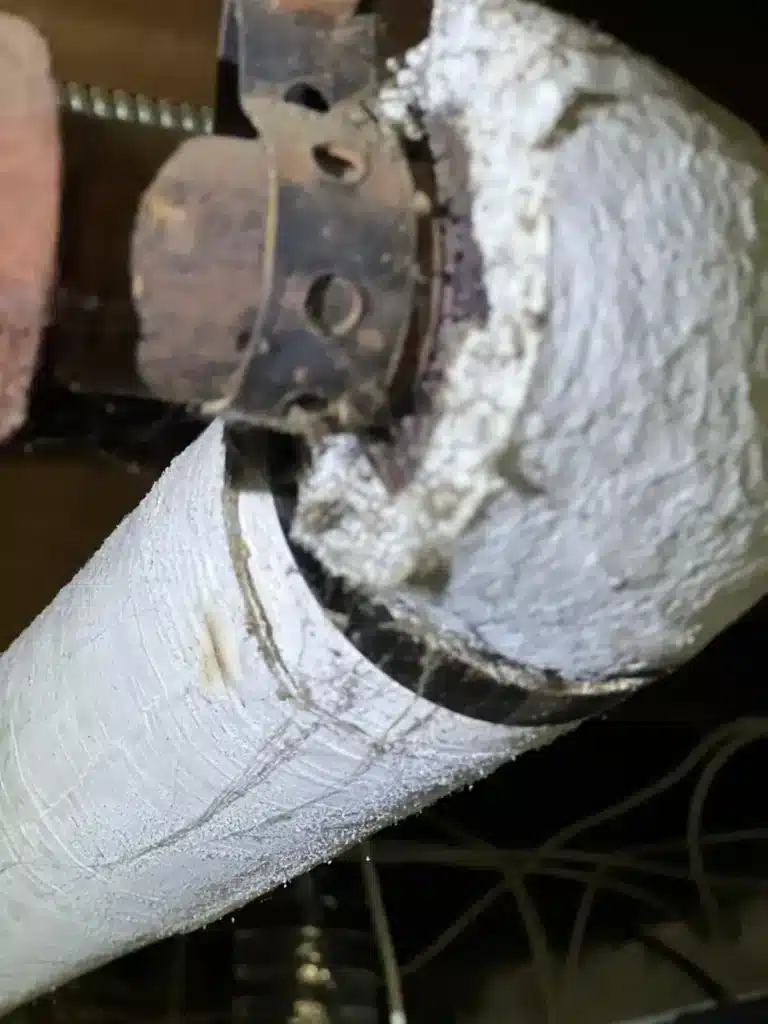Asbestos is a naturally occurring mineral that was widely used in the construction industry for its heat-resistant properties. However, it was later discovered that exposure to asbestos fibers can cause serious health problems such as lung cancer and mesothelioma. Despite being banned in many countries, asbestos can still be found in many unexpected places in our daily lives.
One of the most common places where asbestos can be found is in buildings constructed before the 1980s. Asbestos was used in insulation, ceiling tiles, and even floor tiles. When these materials become damaged or disturbed, asbestos fibers can be released into the air and inhaled, leading to serious health problems. It is important to have a professional inspect and remove any asbestos-containing materials in older buildings.
Asbestos can also be found in many household items such as hair dryers, ironing board covers, and even crayons. While the amount of asbestos in these items is usually small, prolonged exposure can still be harmful. It is important to read labels carefully and dispose of any items that may contain asbestos properly.
Common Household Items Containing Asbestos
Asbestos was once a popular building material due to its durability and heat resistance. Unfortunately, it is also highly toxic when inhaled. As a result, it is no longer used in construction, but many older homes still contain asbestos in various forms. Here are some common household items that may contain asbestos:
Older Appliances
Many older appliances, such as stoves, ovens, and toasters, were insulated with asbestos. This was done to prevent fires and to keep the appliances from overheating. If you have an older appliance in your home, it’s important to have it checked by a professional to determine if it
Vintage Decor and Furniture
Vintage items, such as lamps, vases, and picture frames, may contain asbestos. This is because asbestos was often used as a filler material in these items. If you have vintage decor or furniture in your home, it’s important to handle it with care and to avoid disturbing any materials that may contain asbestos.
It’s important to note that while asbestos is no longer used in construction, it can still be found in many older homes. If you suspect that your home contains asbestos, it’s important to have it inspected by a professional. Asbestos exposure can lead to serious health problems, including lung cancer and mesothelioma.
Construction Materials with Hidden Asbestos
Asbestos was widely used in construction materials for its fire-resistant and insulating properties until the 1980s. While the use of asbestos in construction materials has declined, it is still found in many buildings, especially those built before the 1980s. Here are some common construction materials that may contain hidden asbestos:
Roofing and Siding
Roofing and siding materials made before the 1980s may contain asbestos. Asbestos was used in roofing and siding materials to make them more fire-resistant and durable. Asbestos-containing roofing and siding materials can release asbestos fibers into the air when they are disturbed or damaged. Homeowners should have a professional inspect their roofing and siding materials for asbestos before attempting any repairs or renovations.
Insulation and Flooring
Asbestos was also commonly used in insulation and flooring materials. Asbestos-containing insulation can be found in attics, walls, and around pipes and ducts. Asbestos-containing flooring materials can be found in vinyl floor tiles, linoleum, and backing materials. Asbestos fibers can be released into the air when these materials are disturbed or damaged.
Homeowners should have a professional inspect their insulation and flooring materials for asbestos before attempting any repairs or renovations. If asbestos-containing materials are found, they should be removed by a licensed asbestos abatement professional.
It is important to note that not all construction materials made before the 1980s contain asbestos. However, it is always better to be on the side of caution and have a professional inspect any materials suspected of containing asbestos.
Automotive Parts Prone to Asbestos Use
Asbestos has been used in various automotive parts for decades due to its heat-resistant properties. Although the use of asbestos in automotive parts has significantly decreased, some older vehicles may still contain asbestos-containing parts.
Brake Pads and Linings
Brake pads and linings are one of the most common automotive parts that contain asbestos. Asbestos was widely used in brake pads and linings because of its heat resistance and durability. Exposure to asbestos from brake pads and linings can occur when the pads or linings are worn down and the dust is released into the air. According to Asbestos.com, “Mechanics and auto repair professionals are at the highest risk of exposure to asbestos from brake pads and linings.”
Clutch Facings
Asbestos was also used in clutch facings because of its ability to withstand high temperatures and friction. When the clutch facings are worn down, asbestos fibers can become airborne and inhaled by the mechanic or driver. According to Mesothelioma.com, “Auto mechanics who work on older vehicles are at the highest risk of asbestos exposure from clutch facings.”
It is important to note that the use of asbestos in automotive parts has significantly decreased over the years. However, older vehicles may still contain asbestos-containing parts. If you are working on an older vehicle or have an older vehicle, it is important to take proper precautions to avoid exposure to asbestos.
Preventing Asbestos Exposure in Daily Life
Asbestos is a dangerous substance that can cause severe health issues, including mesothelioma and lung cancer. To prevent asbestos exposure in daily life, it is essential to take certain precautions.
Safe Renovation Practices
If you plan to renovate an older building, it is crucial to take precautions to prevent asbestos exposure. Before beginning any renovation project, it is essential to have the building inspected by a professional asbestos testing company. They can identify any asbestos-containing materials and recommend the best course of action.
During the renovation process, it is crucial to follow safe practices, such as wetting down materials to minimize dust and wearing proper protective equipment, including respirators and gloves. It is also important to dispose of any asbestos-containing materials safely.
Professional Asbestos Testing and Removal
If you suspect that your home or workplace may contain asbestos, it is crucial to have it tested by a professional asbestos testing company. They can identify any asbestos-containing materials and recommend the best course of action.
If asbestos is discovered, it is essential to have it removed by a professional asbestos removal company. Attempting to remove asbestos on your own can be dangerous and lead to asbestos exposure. Professional asbestos removal companies have the necessary equipment and training to remove asbestos safely.
By following safe renovation practices and having your home or workplace tested and asbestos removed by professionals, you can help prevent asbestos exposure and protect your health.


